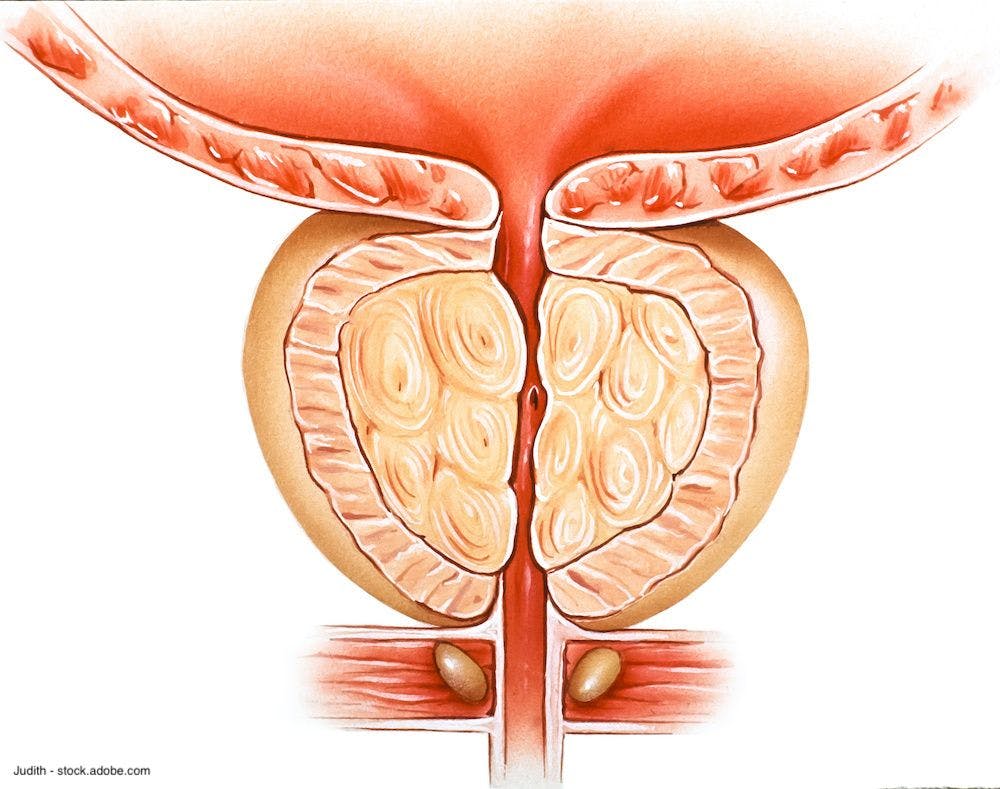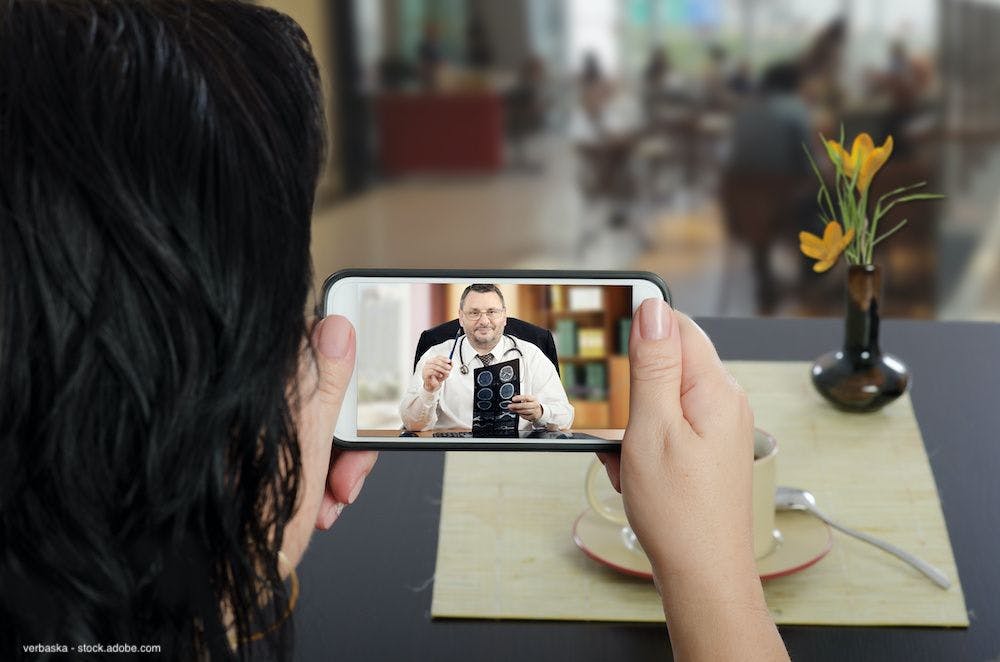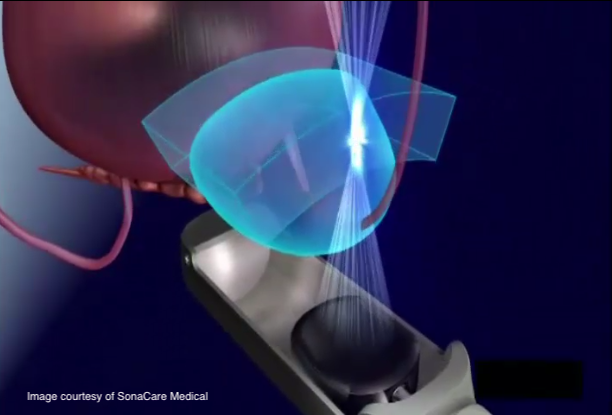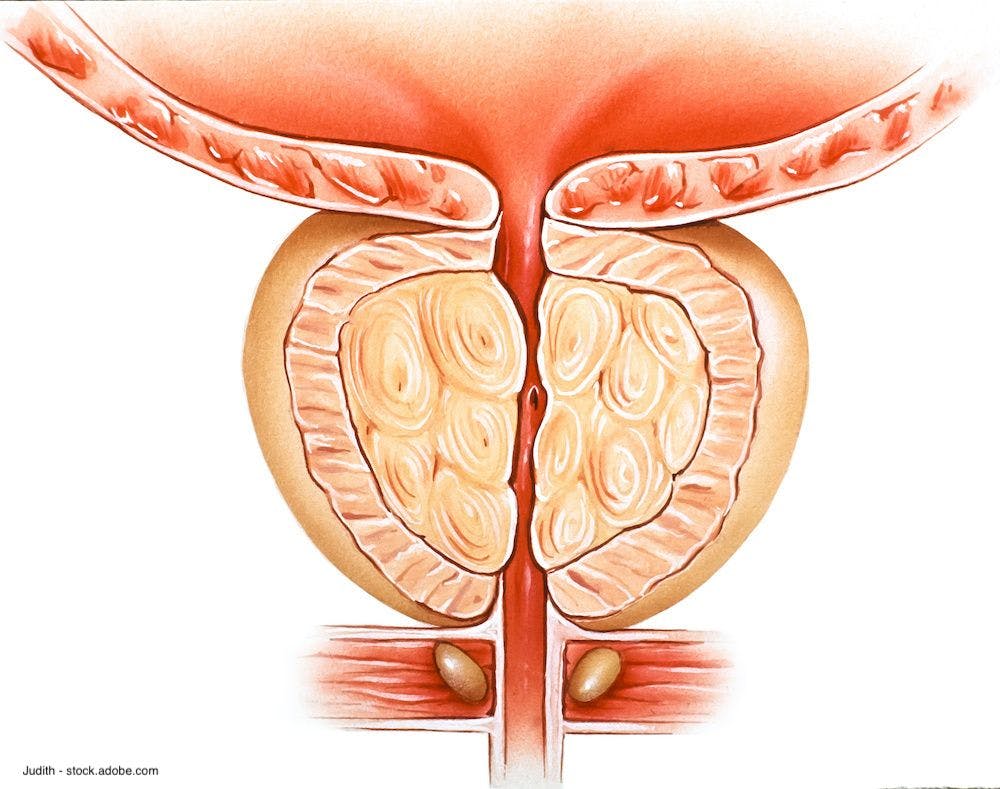Publication
Article
Urology Times Journal
HIFU in focus: An expert's take on high-intensity focused ultrasound
Samuel J. Peretsman, MD, discusses which patients with prostate cancer can be treated with HIFU, contraindications to the treatment, and what expectations patients need to have postoperatively.
Samuel J. Peretsman, MD

In 2004, urologist Samuel J. Peretsman, MD, began noticing a new group of patients in his practice: men following up after being treated abroad with high-intensity focused ultrasound (HIFU). This prompted Peretsman to investigate and ultimately incorporate HIFU into his own practice. In this interview, Peretsman discusses which prostate cancers can be treated and which prostate glands can be treated with HIFU, contraindications to the treatment, and what expectations patients need to have postoperatively. Peretsman is with Urology Specialists of the Carolinas in Charlotte, North Carolina. He was interviewed by Urology Times® Editorial Consultant J. Brantley Thrasher, MD, executive director of the American Board of Urology.
Please describe your experience with HIFU.
In the late 1990s, a number of the academic centers here in the southeast were considering joining an Ablatherm trial, which was the only HIFU trial available at the time. We were referring patients to Washington, DC if they were interested. That trial never expanded, so none of the men in my part of the country were able to participate locally.
Within a few years I began seeing patients who would make appointments for their HIFU follow-up. They weren’t patients I was treating primarily; they were returning to the area. Their urologists were not comfortable taking care of them after they were treated in Europe. In 2004, when I encountered the first of these men, I decided that if people from my part of the country were going to Europe to get treated, I needed to understand HIFU so I could care for them. Secondly, I should consider the technology’s advantages because men were opting out of robotic prostatectomies, brachytherapies, cryotherapies, and IMRT. What weren’t we offering our patients that they would get on a jet and fly to another country to pursue an alternative treatment?
What actually is prostate HIFU energy, and how is it delivered?
The “U” in HIFU stands for ultrasound, meaning therapeutic sound waves, which are basically higher-power diagnostic sound waves. The energy wave must pass through a medium, which is the human tissue. Most of the HIFU machines use a piezoelectric crystal to create amplified sound waves that are then targeted at a focal point. The focused sound energy creates thermal coagulation—coagulative necrosis. Our target tissue temperature runs in the low 90s centigrade. There are also secondary effects including mechanical disruption and immunologic responses. Similar to cryotherapy, the actual response is multimodal, but primarily thermal-created coagulative necrosis.
Are your patients asleep during the procedure?
Yes, they need to be asleep and motionless. We did do the procedures under continuous spinal anesthesia about 15 years ago. Most importantly, you need to target well so patients can’t be moving. With cryotherapy and brachytherapy, the prostate shifting is lessened somewhat by the needles. With HIFU, patient movement is an issue.
How many different HIFU devices are currently available? Is one more commonly used?
In the United States, there are currently four ultrasound based devices. Over 90% of cases are done with the Sonablate 500. That’s the device that came along in the 1980s in this country and was also sold in Asia and Europe. EDAP TMS, a French company, markets the Ablatherm and, more recently, the Focal One. There’s the INSIGHTEC ExAblate, which the FDA approved in the past for conditions such as bone metastasis and fibroids. The most recent addition is the Profound Medical TULSA-PRO, which is an in-gantry MRI-guided device that delivers thermal ultrasound from a device within the urethra. It is radially directed from a urethral transducer, so not technically focused.
What are your treatment criteria in terms of size of prostate or a certain cancer type? Give me an idea of how you choose your patients for HIFU.
There are technical limitations, safety limitations, prostate limitations, and cancer limitations. In terms of technical limitations, you have to be able to get the sound to target. For example, the Ablatherm and Sonablate devices, have AP height limitations due to focal length. For the commonly used Sonablate, you’re able to treat about 3.4 to 4 cm away.
There can’t be interference such as rectal wall calcification, large prostate calculi, or many closely approximated brachytherapy seeds. Things that impede diagnostic sound are going to impede therapeutic sound. These factors are part of the evaluation. The issue is not the total prostate size; it’s whether you are able to reach the target from the plane of the transducer. In most cases with the Sonablate 500, we’re looking for 34 mm or less to give us some wiggle room above the lesion such as an anterior lesion.
From a cancer perspective, whether you’re referring to cryotherapy or HIFU, nobody has ever shown that there’s a grade-dependent response to thermal ablation. The important question is, is all the cancer you want to treat reachable? By default, you’re not going to treat much beyond 4 cm away, so that’s the prostate and the base of the seminal vesicles. You’re certainly not going to treat lymph nodes. At the University of Southern California (USC), they’ve done robotic outpatient lymphadenectomy before they’ve taken on prostate HIFU for high-grade disease.
What are some contraindications to HIFU?
The first contraindication is a target that’s too far away. If, on MRI, your patient has a 15-mm lesion in a 70-gram prostate and the lesion is up by the anterior capsule, you’re not going to reach it. Now you can do things to bring it toward the energy source such as transurethral resection of the prostate or any type of hormonal downsizing. Another contraindication would be a sound path issue. If the cancer on MRI is on the anterior side of a cluster of brachytherapy seeds along the rectal wall, you can’t effectively pass sound through all that metal.
There could be rectal wall calcification, and if you heat the rectal wall, you could create a fistula. The next would be a large, distal apical lesion where you don’t want to heat the backside of the pubis and create osteitis pubis. Those are the therapeutic, geometric, and safety issues.
Would you say HIFU is contraindicated in patients who have had rectal surgeries or a previous ulcer?
Not absolutely, but it is on the manufacturers’ list of relative contraindications. What I do is assess the rectal wall by ultrasound. If it’s not overly thickened from radiation and there is not calcium or a very low anterior resection compromising vascularity, then HIFU is not necessarily contraindicated.
Talk to me about the expectations of the patients. What do you tell them to expect postoperatively?
The procedure is done on an outpatient basis, it’s painless, and patients are not prescribed pain medicine. Patients have some urgency from the heat for a couple of hours after the procedure. The postoperative management depends on whether you are performing whole-gland or targeted HIFU. I recently had a HIFU patient whose Foley catheter was removed in just a few days, but that was a hemiablation in a young man. His prostate was only 23 cc, and we treated one side. If you take on a 40-gram prostate, you can see swelling in the course of the procedure. In some men, I might leave a suprapubic tube and not even have a voiding trial for 10 to 12 days. It takes time for that edema to go away.
I try to give modest expectations. I really want patients to understand that they’re choosing HIFU in lieu of something else: including radical prostatectomy, brachytherapy, or cryotherapy—approaches with which I have decades of experience. They need to understand what they’re gaining and what they’re giving up.
There are two things about HIFU unequivocally demonstrated in the literature for over 20 years. When you choose HIFU, you are going to have some obstructive symptoms potentially, and you can experience an infield recurrence (as you could with radiation or cryotherapy). You can’t have an infield recurrence with a robotic prostatectomy. So you need to understand that’s what you’re inheriting.
What you’re gaining is the lack of morbidity. Our group, along with the USC group, had an abstract presented at the 2020 International Symposium on Focal Therapy and Imaging in Prostate and Kidney Cancer, reporting on our first hundred hemiablations1. The rate of incontinence—measured as anything greater than zero pads—was zero in 100 consecutive patients. International Index of Erectile Function (IIEF-5) scores dropped 1 point. Patients are seeking diminished morbidity. I personally don’t view obstructive problems as a complication to the therapy; I build it into the expectation.
If a patient seeks to reduce the need for an inflatable penile prosthesis, artificial sphincter, or postoperative sling following surgery/radiation, he’s got to get through the short-term recovery of HIFU. I think I’m known in the community as an aggressive HIFU surgeon as far as how much tissue I treat and how much swelling I’m willing to create, because I just consider it a short-term nuisance. That’s how I counsel the patients. Other HIFU surgeons will choose to treat less surrounding tissue.
Do you generally prescribe patients alpha-blockers and anticholinergics postoperatively?
They all get alpha-blockers. They only get an anticholinergic or mirabegron (Myrbetriq) if they have prolonged irritative symptoms, which is uncommon. If there are 10 problems postoperatively, 9 are going to be mechanical weakening of the stream.
What do you tell patients about the risk to the bladder or bowel when you compare it to nonsurgical treatments?
Unlike any type of ionizing radiation, there are no delayed bladder, rectal, or urethral issues. Patients will not develop a secondary malignancy or gross hematuria years after ultrasound energy ablation. The fistula rate is about 0.7%, although most of that occurs in post-radiation patients; I’ve never had one.
Compared to surgery—let’s use robot-assisted radical prostatectomy because it’s the most common in this country—there are no intraabdominal issues. There’s no ileus, and there’s never a bowel obstruction. A rectal injury without prior radiation is exceedingly rare in the literature. The main issue is prolonged obstructive symptoms based on how much tissue you ablate.
What do you say about incontinence and the risk of erectile dysfunction?
To the best of my due diligence, there’s never been an artificial urinary sphincter placed for a HIFU patient in the United States or actually ever sold for such a patient by American Medical Systems/ Boston Scientific. I am aware of one sling. I performed a sling procedure on a patient who was treated with HIFU outside of the country and who received a lot of apical heat and developed membranous stenosis that was cut instead of dilated. So the incontinence rate is close to zero. In our personal experience, when we looked at the first 174 patients in this country, it was zero.
Erectile dysfunction is a bit of an issue because of the variation of the delivery of the technique. If you looked at the rate of erectile dysfunction (ED) in European publications in the 1990s and 2000s, I think it is remarkably high—40% to 60% with whole-gland HIFU. Part of that is they appeared to use a non neurovascular sparing technique.
I tell patients the ED rate is 0% to 20%, and they should recover most of their function. The exception would be the case of a large lesion along the neurovascular bundle, because we can ablate a nerve and blood vessel with sufficient heat. If we target the neurovascular bundles, you’re going to lose function. But if we don’t target them, ED should be very mild and transient.
Give me an idea of how you’re doing focal ablation. I assume that you’re probably using MRI, or are you doing a technique where you take 70 biopsies to truly map it out beforehand?
To me, patients consider HIFU because they don’t want to be incontinent and they don’t want to be impotent. Why do they care about the rest of the 3-dimensional mass of their prostate? Do they really care about semen production? Thus I personally create very wide margins, typically hemiablations. Years ago at an American Urological Association annual meeting, there was a discussion between Dr. Mark Emberton from London and myself about focal therapy. Whereas Mark Emberton was doing tight margins, a few millimeters, years ago, he had a highpersistence rate, over 30%, as I recall.
I perform morbidity-sparing HIFU. I ask myself: Can I spare the urethra if there’s no evidence of tumor near it and minimize patients’ voiding dysfunction? Can I spare their neurovascular bundles? Can I spare their sphincter? If so, they’ll be potent, continent, and have the least possible voiding dysfunction. They’ll be happy with the treatment choice.
I’m regardedby some as a non-focal HIFU guy. I personally do not believe MRI in this country is sufficient to put tight margins around MRI lesions. If you look at our infield failure rate, it is low. And the first way to make it higher is to really tighten your margins.
Talk to me about your experience with operations if you fail with HIFU. Have you done a robotic prostatectomy following a failed HIFU?
Because I’ve lived in the radical prostatectomy world for decades and entered the HIFU world early, I became an incidental expert in this. I published our early experience with robot-assisted radical prostatectomy for persistence after treatment with the Sonablate 500.2 My personal series is now 28, which isn’t a large number. but as far as I can tell remains the largest single-surgeon series of robot-assisted radical prostatectomies after Sonablate 500. We’re updating the series now for publication. We found that robotic prostatectomy after Sonablate 500 is very safe, has low morbidity, and is effective. Incontinence was paradoxically less than it was in de novo patients. It’s actually been zero in the first 27 patients. Excluding the patients treated in the past couple of months, the longest anybody was in pads after the Foley was removed was 35 days, so this was paradoxically faster than the de novo patients.
To no great surprise, disease control is related to the time until the patient’s second diagnosis. If you seek failure early, follow his PSAs closely and evaluate the rise early, then the local persisitence should be low volume and amenable to a second local therapy. Needless to say, you’re going to do well surgically. If you wait for 6 or 7 years until the PSA approaches 10, you’re going to find higher volume disease, more positive margins, and more extracapsular extension. Your disease control is obviously going to diminish.
We had our sentinel patient in 2007, who is now in his 70s. He remained potent after treatment with whole-gland HIFU and subsequent salvage robotic prostatectomy.
How difficult is HIFU to learn? What courses do you recommend?
HIFU has a unique advantage in that it’s a completely cognitive procedure. Unlike learning robotics, you can do as much on-screen practice and education as you want. You can also go watch other surgeons, and you’re making all the same cognitive decisions they are. You don’t need to have it in your hand. There are online tutorials and a simulator where you can work through cases. Urologists can get so much more experience with this before they become the surgeon of record. In essence, one gets as much experience as needed to be comfortable. In my view, this is unique in terms of learning curves over my many years with other technologies.
Are there courses put on by the companies, or are you proctored by experts?
Both are options. You can start with either a manufacturer or a service provider. There are online tutorials. You can do cases online, right on a laptop because that’s all you’re using during the case. You can go to a center where HIFU is performed and watch cases over the provider’s shoulder. You can also get as many proctors as you want when you’re doing cases; any local expert can come and help you get through the case or even by remote access to your screen.
What are hospitals requiring from a credentialing standpoint? Do they require a certain number of proctored cases?
In my part of the country, it’s all done as an outpatient procedure, so in surgery centers and offices. You need a service provider. The device is either purchased by a facility or you use one of the national mobile providers. The largest national mobile provider, HIFU Prostate Services, has both remote and in-case proctoring, so you can do some online and then you can come watch cases. A proctor will sit next to you for as many cases as you want. The bottom line is you can get more education and experience than you could have attained with any other form of prostate cancer therapy.
What are your take-homes for clinicians regarding HIFU?
HIFU has been around for a few decades but has only really been in our backyard for 4-5 years. My take-home message is: It’s not a magic wand, it’s an ablation. It’s just controlled lethal heat. A urologist just needs to understand how to create it, how to deliver it, how to monitor it, and then how to follow the patient. It’s not difficult; it just takes discipline and time.
References
1. Abreu A, Peretsman S, Fujihara A, Shakir A, Iwata T, Brook J et al. The initial results of HIFU hemi-gland ablation for prostate cancer from the largest US series since FDA clearance. Presented at the 2020 International Symposium on Focal Therapy and Imaging in Prostate and Kidney Cancer. Abstract PP35.
2. Peretsman S, Brooks J. Salvage Robotic Prostatectomy Following Whole Gland High-Intensity Focused Ultrasound With a Sonablate 500 Device: Technical Feasibility and Safety. J Robot Surg. 2017;11(2):217-221.






























